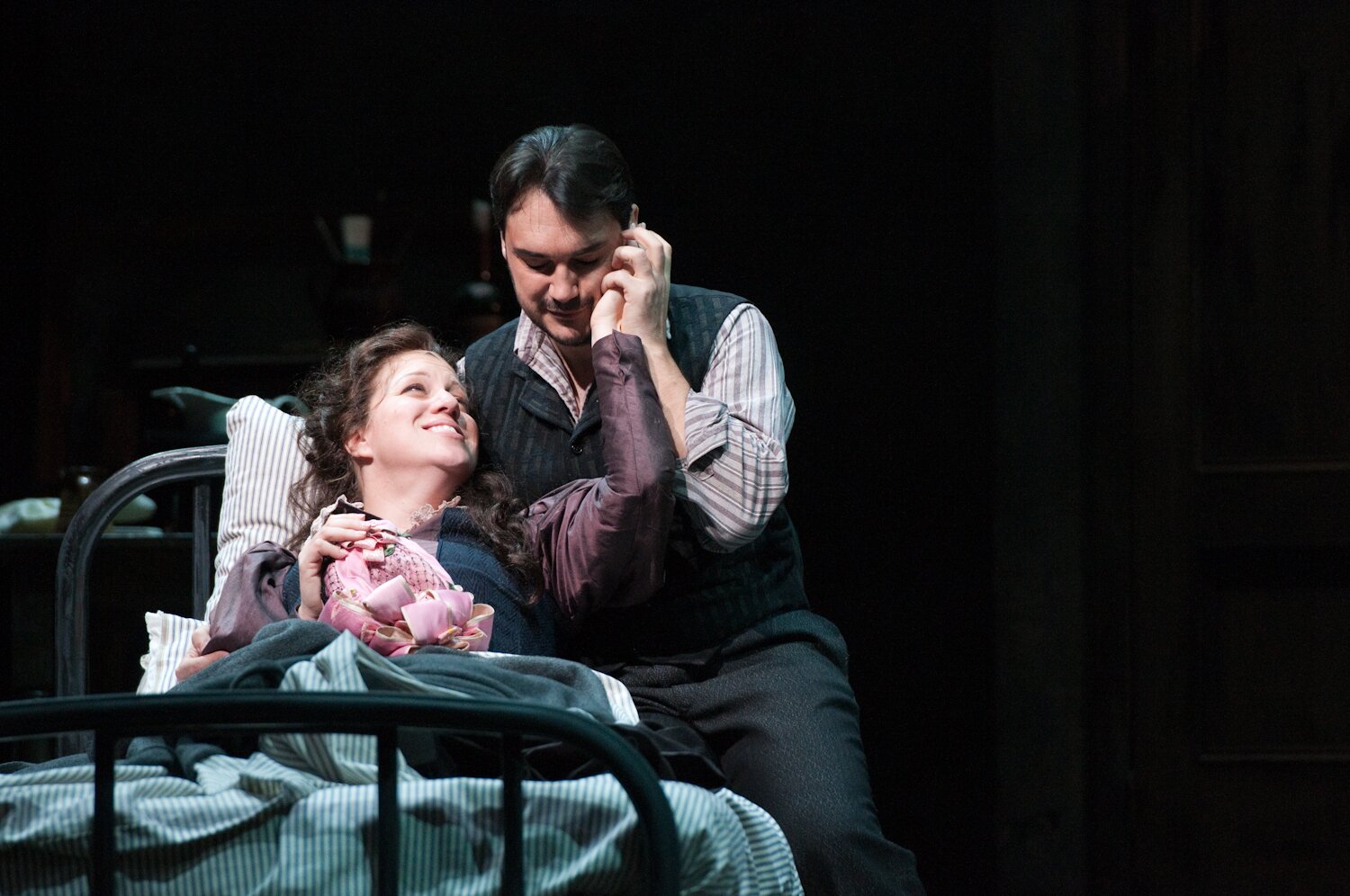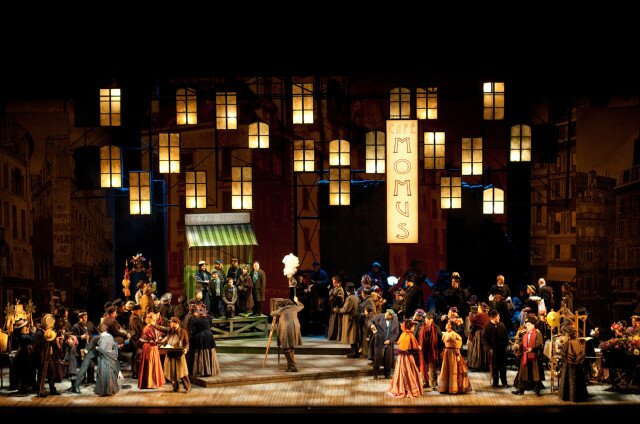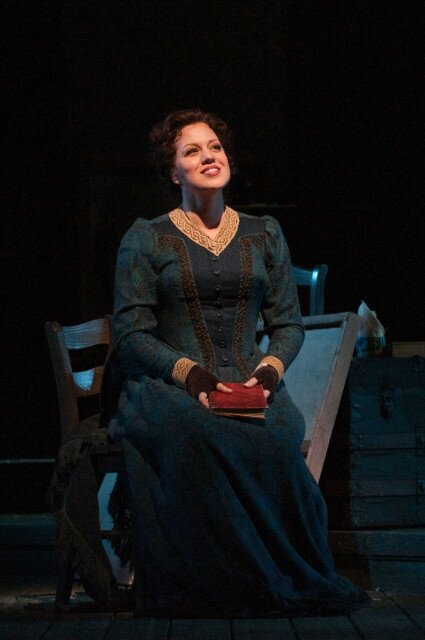Seattle Opera’s production of Puccini’s La Bohème feels like coming home. Even if you’ve never seen Bohème before, you’ll feel warm, welcome, and aware of life’s fragile beauty afterward — not just because of Puccini’s glorious score, but because of Seattle Opera’s treatment of it.
Once again, Seattle Opera has gathered a wonderful set of singers for both casts. On Saturday, Elizabeth Caballero’s Mimì was serious, smart, and indulgent, as well as vocally strong. As Rodolfo, Francesco Demuro was a compact force. He was a pleasure to watch, and his sparkling tenor was a delight to hear. Norah Amsellem, as Musetta, dazzled in the role, flitting here and there as she tried to get her way. And I could have listened to Michael Todd Simpson sing Marcello all night; the music seemed to fit his voice like a glove.
On Sunday, Jennifer Black sang enchantingly as Mimì. Michael Fabiano, as Rodolfo, was glorious to listen to, but his acting choices were at times distracting. As Musetta, Jennifer Zetlan sang the hell out of the role, from beginning to end. Keith Phares was also superb in the role of Marcello.
Rounding out the sextet each night as Colline and Schaunard, Arthur Woodley and Andrew Garland (respectively) had wonderful chemistry with all of their bohemian cohorts. It was a treat to hear Woodley sing the Coat Aria (“Vecchia zimarra, senti”) from Act IV twice.
Beth Kirchhoff deserves a hearty round of applause for preparing not only the full adult chorus impeccably, but also the children’s chorus. Both added to the chaos and vitality of Act II without distracting from the principals.
Aside from a minor update (placing the action in the 1890s rather than its traditional 1830s), this is a fairly classic production. The artists’ garret in Acts I and IV is appropriately spare, cold, and gray, in contrast to the bustle and glow of the Latin Quarter in Act II — the audience applauded for the traditional opening tableau both performances I saw — and the cold, snowy February dawn of Act III. In short, the sets (by Seattle native Erhard Rom) are a masterful portrayal of the story.
La Bohème runs through March 10. Added bonus: Youth tickets for the final matinee are only $15.











